Before 1922, Changhua Railway Station was just an ordinary stop on the Taiwan Trunk Railway line connecting Keelung in the north to Kaohsiung in the south. Its importance was soon transformed, however, when the Coastal Line was built between Changhua and Miaoli County’s Jhunan Township (竹南) . Southbound routes both reconnected at Changhua and it became the division point for northbound trains. Along with this came the need for a large maintenance facility for steam locomotives, and so the Changhua Roundhouse was built.
Taipei, Hsinchu, Chiayi and Kaohsiung all had roundhouses in the past, with Kaohsiung even hosting two of them. However, after steam locomotives fell into disuse, these buildings suffered the same fate as most others worldwide and were dismantled. Fortunately, the one in Changhua was saved just in time and is now open to the public, as a window on our recent past.
WORKING RAILYARD
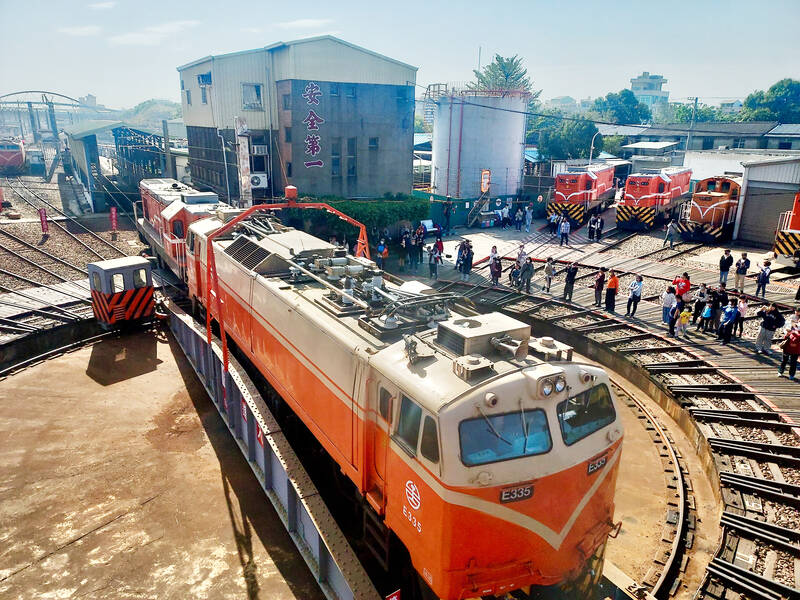
Photo: Tyler Cottenie
To get to the roundhouse, exit Changhua Station, turn left and take the stairs up to the pedestrian overpass above the tracks. From here you can get an appreciation for the size of the Changhua railyard and get your first view of the roundhouse about 500 meters to the north. Once you’re back on ground level on the other side, follow the tracks heading north. You will soon pass the Roundhouse Railway Park (more on that later). Continue on the road until it ends at a T-junction at Jhangmei Road, then turn right to reach the roundhouse facility’s entrance.
After registering inside the gate, follow the curving concrete wall, which is in fact the back of the roundhouse. Before reaching the railyard, there is already both a gift shop and a snack shop on the opposite side. Entrance is free, so this blatant commercialization of a historic site can perhaps be forgiven. The gift shop is also your go-to place for any train-related souvenirs or toys. For NT$999, you can even buy a replica of the Changhua Roundhouse itself.
After reaching the end of the curved wall, visitors can turn left and enter the working area of the railyard. This is part of what makes the Changhua Roundhouse so unique. The few remaining operational roundhouses in the world are generally museums used for demonstration purposes, or active railyards not open to the public. The Changhua Roundhouse is both. Visitors and TRA employees mingle freely and visitors can walk right on the tracks where the locomotives undergoing maintenance enter and exit the roundhouse area.
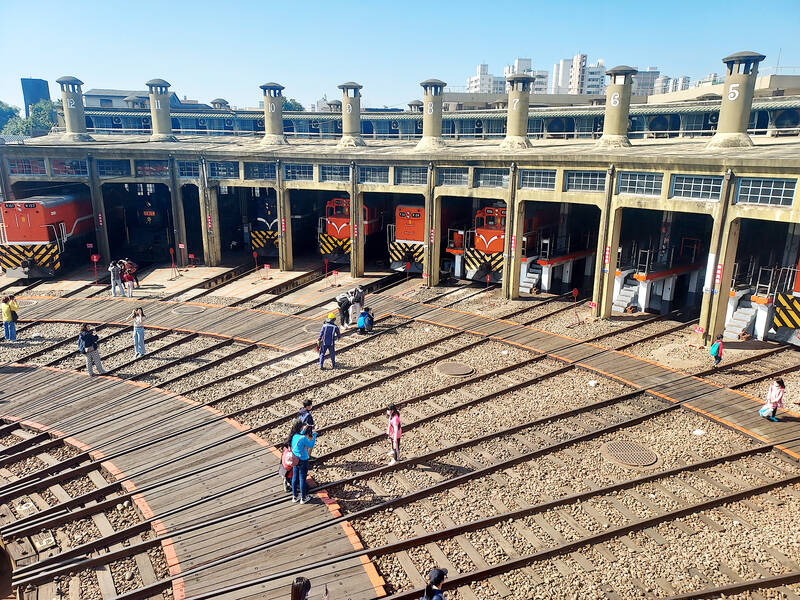
Photo: Tyler Cottenie
In a country where the first response to dangerous areas with the potential for large compensation claims is usually to simply close them off, the fact that tourists are welcomed here boggles the mind.
Though it is a working railyard, areas where visitors are not allowed are still clearly marked. This includes the turntable and the interior of the roundhouse itself. Everywhere else is fair game, however.
Visitors can view the interior of each of the service bays from their entrances or walk all the way around the turntable. When locomotives are about to enter or exit one of the roundhouse bays, a TRA employee does come out with a flag to keep tourists, well, at bay.
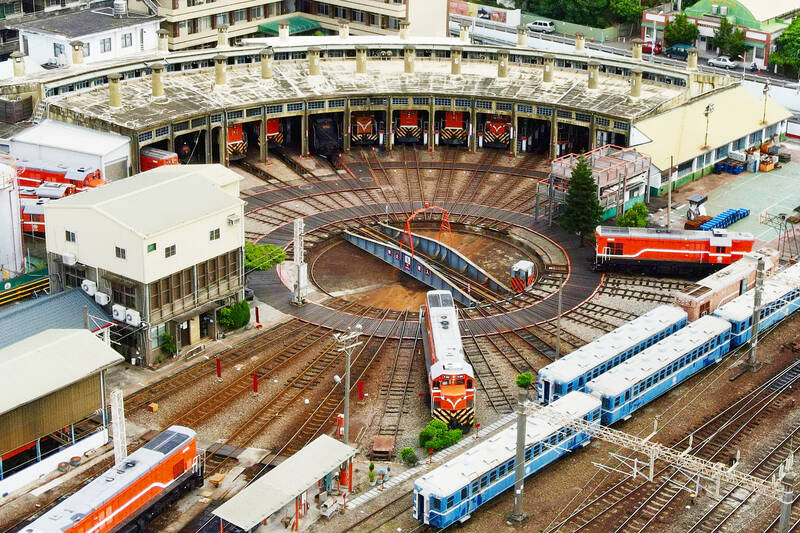
Photo: Sam Yeh, AFP
To get the best view of the roundhouse and turntable in action, head up the stairs to the adjacent observation platform, built especially for tourists. From here, you can watch a serviced locomotive exit its bay, see how the turntable operator spins it around to line up with the correct set of tracks, and finally watch it proceed toward the main railway network for its next duty.
THE RISE AND FALL OF ROUNDHOUSES
In the early days, these service bays were all occupied by steam-powered locomotives. They arrived via the turntable, from which tracks fan out in all directions toward service bays in the curved building. The Chinese name for the Changhua Roundhouse (扇形車庫) actually translates to “fan-shaped shed.” Some roundhouses had so many bays that the building formed almost a complete circle around the turntable, hence the English name “roundhouse.”
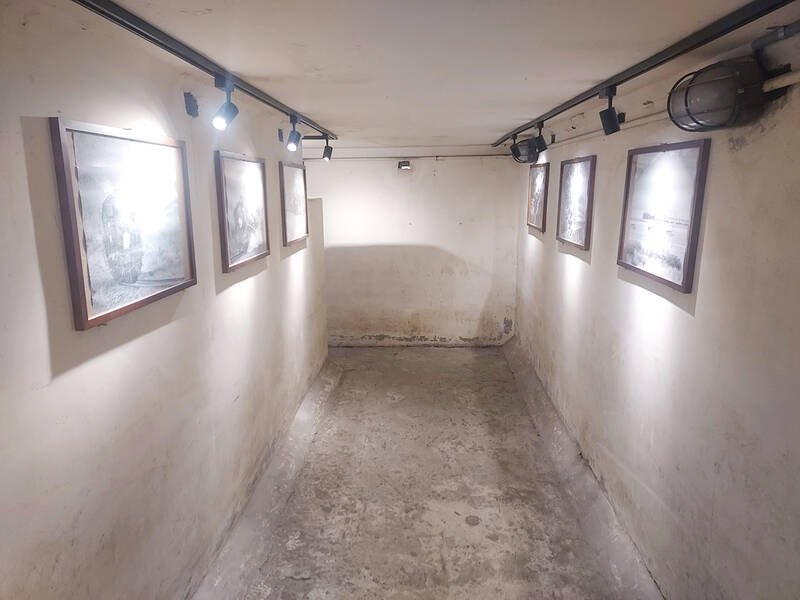
Photo: Tyler Cottenie
When the roundhouse was built in 1922, it initially had six bays. When the steam engines were fired up, there would of course be smoke and steam exhaust that had to be vented away from the workers. This was accomplished by smoke jacks in the roof, one over each service bay, which are still in place. By 1933, rail transportation had increased and the roundhouse had expanded to include twelve bays, all of which are still preserved and in use.
In later decades, steam power was phased out and replaced by diesel-electric and fully electric locomotives. This spelled the end for all the other roundhouses in Taiwan, as the maintenance needs of these newer locomotives were much simpler. To accommodate these newer locomotives, most of the bays at the Changhua Roundhouse were converted to enable work on these machines.
However, bays 10-12 can still service old steam locomotives. The few remaining operational ones are often parked here, and are still put into service for special occasions now and then. On the day of the author’s visit, Bay 11 held CK124, the locomotive featured in the historical drama about the 1930 Musha Incident (known in Mandarin as the Wushe Incident, 霧社事件), Warriors of the Rainbow: Seediq Bale (彩虹戰士:賽德克巴萊).
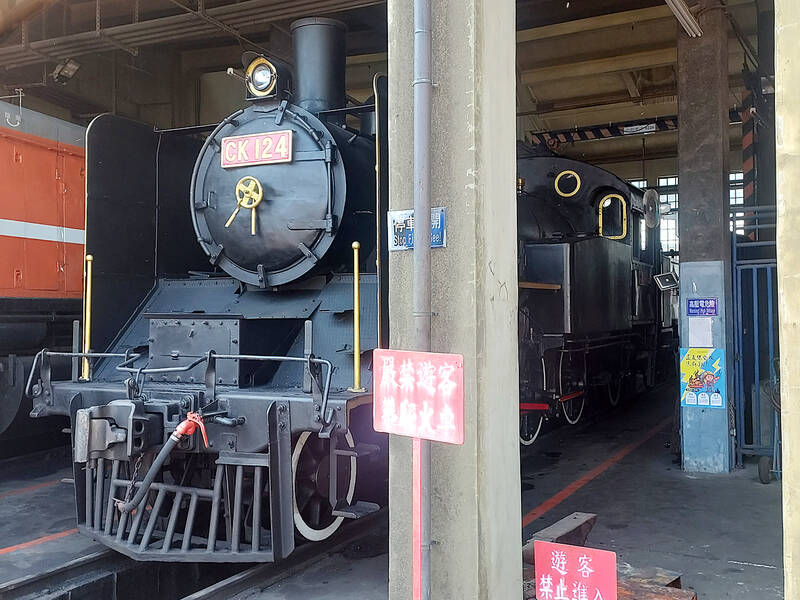
Photo: Tyler Cottenie
Visitors to the roundhouse are most likely to see diesel-electric or electric locomotives moving around here during the day. In just one hour on a Thursday afternoon, the author saw two leave the roundhouse and one enter. The service bays for these locomotives have lowered floors that give mechanics easy access from underneath, much like drive-through oil change service bays for cars. The fully electric locomotives are easy to spot: there are still no overhead electric lines and the electric locomotives must be pushed in or towed out by a diesel-electric locomotive.
RELATED ATTRACTIONS
After your visit to the roundhouse, there are two other areas of interest nearby. The exit to the roundhouse is a turnstile that directs visitors into the Roundhouse Railway Park, a nice place for families with small children.
A miniature railroad circles the park, and one ticket gets you two seats on the train for two loops around the track. The railway even has its own artificial “tunnel” with sparkling lights inside that had some children screaming with either fear or delight. There are snacks for sale here and places to sit and rest throughout the well-maintained grounds.
Finally, there is also a tiny underground air raid shelter that now serves as a photo gallery. During the American bombing campaigns of World War II, the area around the train station was indeed hit, even damaging part of the roundhouse.
When the Changhua Railway Station’s role expanded in 1922, residential quarters for railway employees were also built nearby. This area, just north of the roundhouse across Jhangmei Road, has been designated as a historic site and saved from demolition, but no restoration work has been done yet. Curious visitors can make their way here to explore a maze of abandoned buildings and look over household items left by former railway employees. There is a mix of Japanese-era wooden buildings and newer brick and concrete buildings, indicative of the long time span during which this area was in use.

A vaccine to fight dementia? It turns out there may already be one — shots that prevent painful shingles also appear to protect aging brains. A new study found shingles vaccination cut older adults’ risk of developing dementia over the next seven years by 20 percent. The research, published Wednesday in the journal Nature, is part of growing understanding about how many factors influence brain health as we age — and what we can do about it. “It’s a very robust finding,” said lead researcher Pascal Geldsetzer of Stanford University. And “women seem to benefit more,” important as they’re at higher risk of

Eric Finkelstein is a world record junkie. The American’s Guinness World Records include the largest flag mosaic made from table tennis balls, the longest table tennis serve and eating at the most Michelin-starred restaurants in 24 hours in New York. Many would probably share the opinion of Finkelstein’s sister when talking about his records: “You’re a lunatic.” But that’s not stopping him from his next big feat, and this time he is teaming up with his wife, Taiwanese native Jackie Cheng (鄭佳祺): visit and purchase a

Experts say that the devastating earthquake in Myanmar on Friday was likely the strongest to hit the country in decades, with disaster modeling suggesting thousands could be dead. Automatic assessments from the US Geological Survey (USGS) said the shallow 7.7-magnitude quake northwest of the central Myanmar city of Sagaing triggered a red alert for shaking-related fatalities and economic losses. “High casualties and extensive damage are probable and the disaster is likely widespread,” it said, locating the epicentre near the central Myanmar city of Mandalay, home to more than a million people. Myanmar’s ruling junta said on Saturday morning that the number killed had

Mother Nature gives and Mother Nature takes away. When it comes to scenic beauty, Hualien was dealt a winning hand. But one year ago today, a 7.2-magnitude earthquake wrecked the county’s number-one tourist attraction, Taroko Gorge in Taroko National Park. Then, in the second half of last year, two typhoons inflicted further damage and disruption. Not surprisingly, for Hualien’s tourist-focused businesses, the twelve months since the earthquake have been more than dismal. Among those who experienced a precipitous drop in customer count are Sofia Chiu (邱心怡) and Monica Lin (林宸伶), co-founders of Karenko Kitchen, which they describe as a space where they